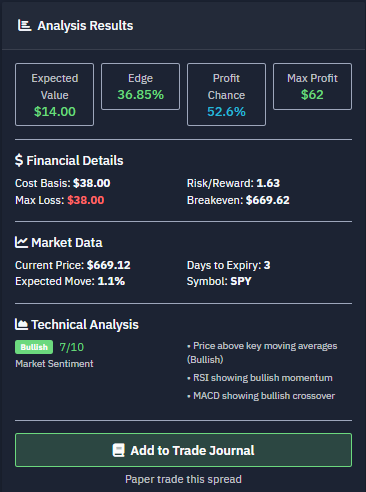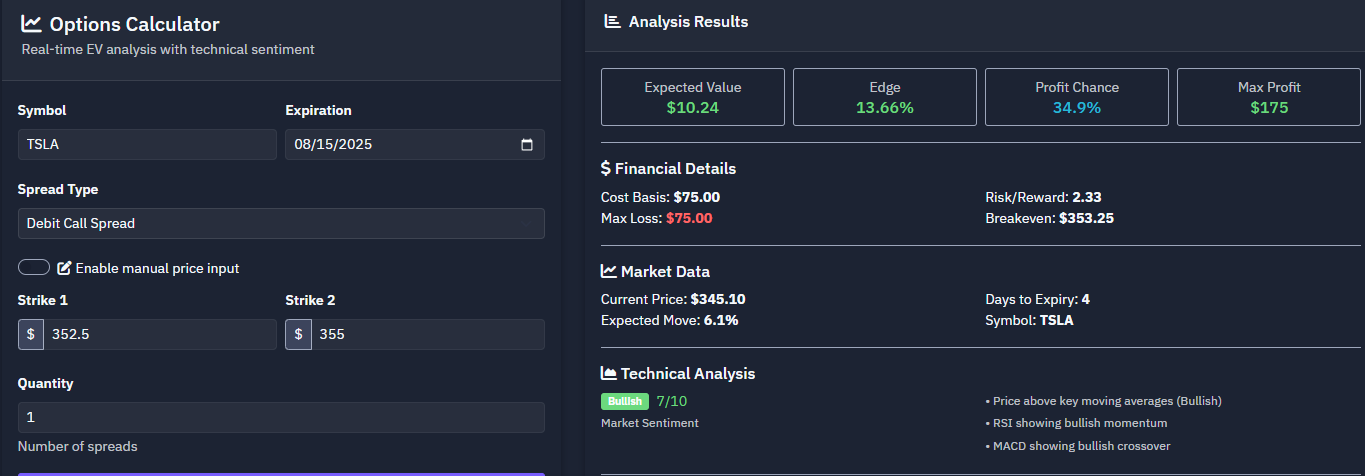The Smarter Way to Trade Options
Calculate the Expected Value (EV) of any options trade and know exactly whether to Hold or Exit — powered by advanced probability models.
New to options trading with Expected Value?
Start with the Beginner Tutorial
Calculate Expected Value with technical analysis and market data
